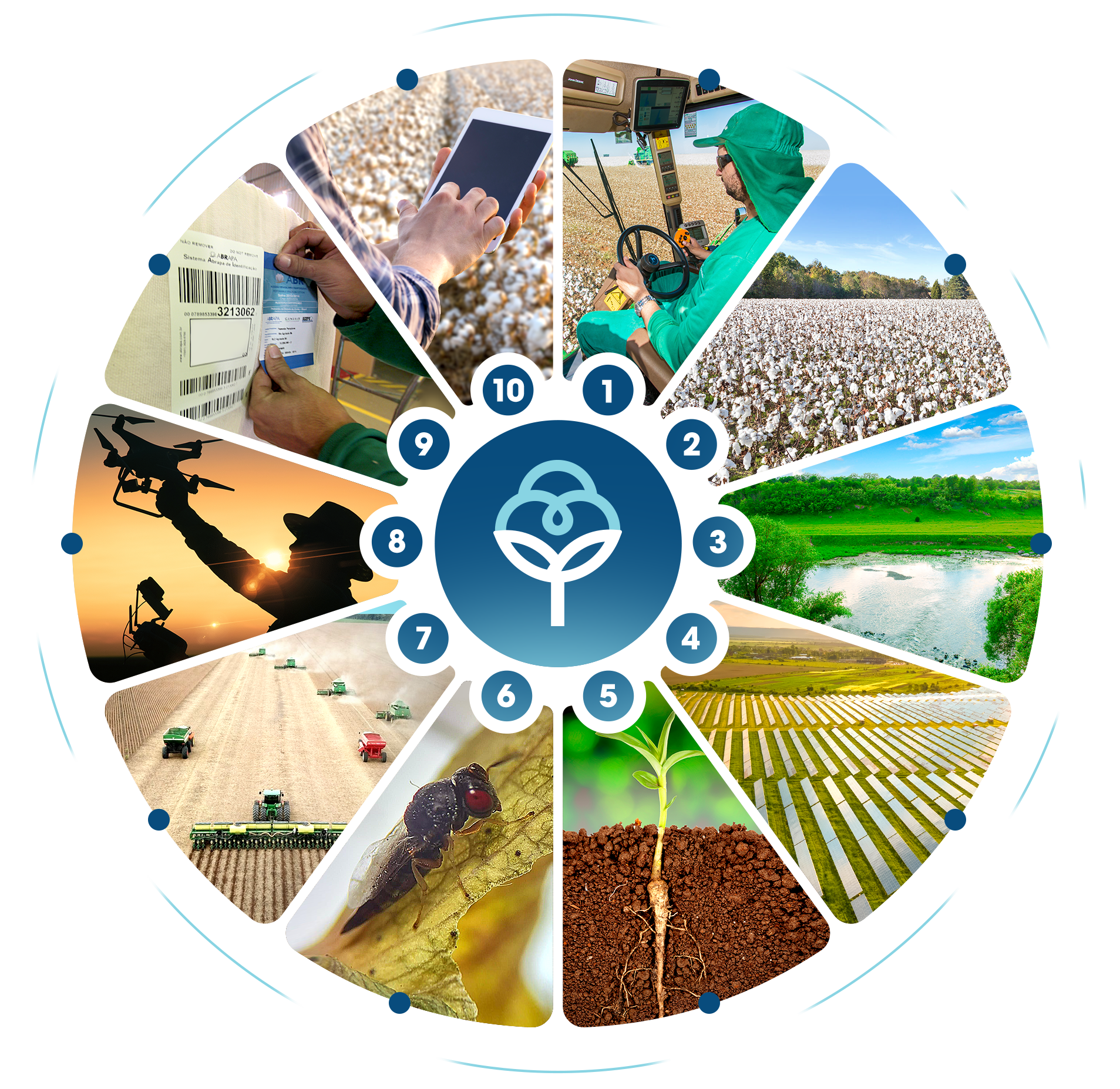

In addition to only 8% of the Brazilian fiber being cultivated using irrigation, there are projects for regional conservation of water resources - protection, preservation and recovery of riverheads, studies on silting up and contamination by chemicals – and specifics actions with the study’s results. Ex.: Project: recovery of river springs by rural producers.

Brazil's electricity matrix is based in renewable sources. In 2020, renewable energy supplied 85% of the electricity sector demand and it is expected to reach 88% by 2030. This contributes to reduce the carbon footprint of the cotton supply chain in Brazil.

Encouraging the use of biological pest and diseases control. The objective is to replace part of the chemical pesticides used. Other promoted techniques include: free-host period, biotechnology, mandatory crop calendar, biopesticides, insect traps and scouting, etc.

In Brazil, cotton is produced mostly as a second crop. This is called “double cropping system” and means that once the raining season starts (Sep-Oct) farmers plant soybeans and only after the soybean harvest (Jan-Feb), cotton is seeded. 63% of all cotton production in Brazil is grown as a second crop. In other words, more than 1 million hectares of land are being spared, reducing land use change pressure and maximizing food and fiber production per hectare.

Brazilian farmers are known for the high level of technology adoption in their farms. Smart and digital farming tools have been largely used in order to increase operational efficiency and reduce input use.

Each cotton bale produced in the country has a bale identification number that can be used to trace the bale back to the farm, farmer and cotton gin, using an online database. Abrapa has invested to bring certification and traceability with large financial investments.

Encouraging the use of soil conservationist practices. Cover cropping, no-tillage and reduced tillage are widespread practices among Brazilian cotton growers. In combination with cover crops and crop rotation, these practices improve soil health and contribute to reducing GHG emissions.

In addition to only 8% of the Brazilian fiber being cultivated using irrigation, there are projects for regional conservation of water resources - protection, preservation, and recovery of riverheads, studies on silting up and contamination by chemicals – and specific actions with the study’s results. Example: Project for recovery of river springs by rural producers.

Regularization of environmental conservation areas, in line with the Brazilian Forest code, in all farms; Depending on where a farm is located, between 20% and 80% of the native vegetation of each farm must be preserved by the farmer as well as riparian forests along rivers and streams. Farmers are also engaged in the prevention of farm and wildfires, through the implementation of on farm fire brigades.

Effective reduction of workers accidents due to the training actions implemented by the certification; Improvement of well-being and health of farmers and farm workers; Farm workers are also trained on the correct use of personal protective equipment (PPE) and other safety measures when handling crop protection products and farm equipment.